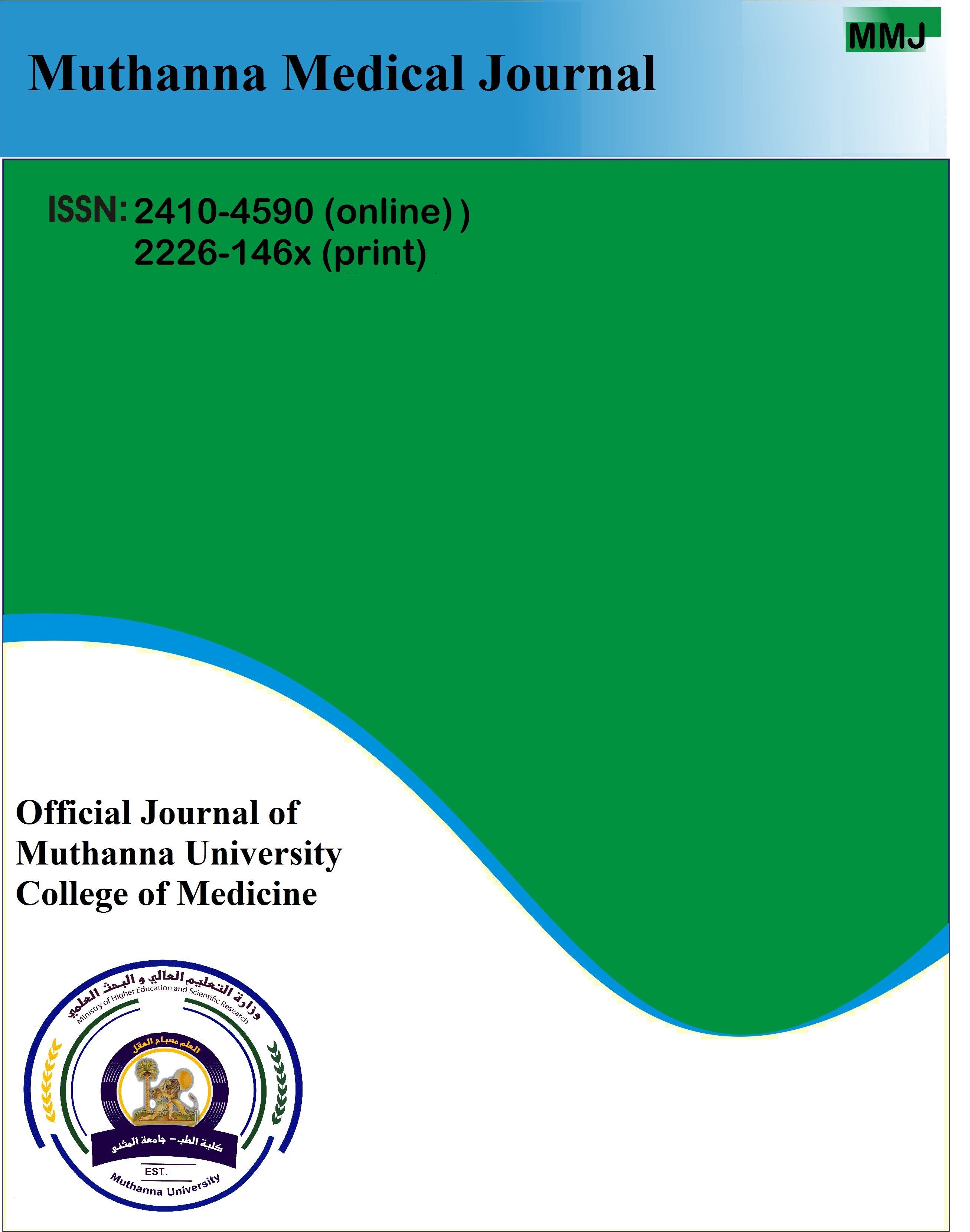Muthanna Medical Journal
Volume 9, Issue 2, 2022 Page 77-90
http://dx.doi.org/10.52113/1/1/2022-77-90
Shahad Rashad Hameed ¹*, Jehan Abdul Sattar Salman
Correspondence author: shahad.r.hameed94@gmail.com
¹ Department of Biology- College of Science -Mustansiriyah University- Baghdad
Received 30 July 2022, Accepted 30 September 2022, Available online 23 September 2022.
Copyright © 2022 SH. This is article distributed under the terms of the Creative Commons Attribution License http://creativecommons.org/licenses/by/4.0), which permits unrestricted use, distribution, and reproduction in any medium, provided the original work is properly cited.
Abstract
Stool samples were collected from 100 children patient aged between 3 days to 11 years who suffered from diarrhoea to isolate diarrheal causative bacteria. Fifty-one isolates were isolated and identified by cultural, microscopical, biochemical tests, and Vitek 2 system. The isolates were distributed as: 46 isolates belonged to Escherichia coli, 4 isolates belonged to Shigella sonnei, and one isolate belonged to Providencia alcalifaciens. All isolates were tested for antibiotic susceptibility to 10 different antibiotics and autoaggregation ability. All isolates were revealed resistant to Metronidazole while they were sensitive to Imipenem except one isolate of E. coli showed resistance to it. In the case of autoaggregation ability, all isolates showed their ability to auto aggregate at 24h, while some of them have the auto aggregation ability at 4h and 9h. The highest auto aggregation percentage at 4h was recorded 86% for E. coli among S. sonnei and P. alcalifaciens isolates which gave percentage rates (57.14 and 33) % respectively. The current study aimed at the isolation, and identification of diarrheal causative bacteria, antibiotic susceptibility, and detection of auto-aggregation ability of diarrheal causative bacteria.
Keywords: Diarrhoea, Diarrheal causative bacteria, Auto aggregation, Antibiotic susceptibility